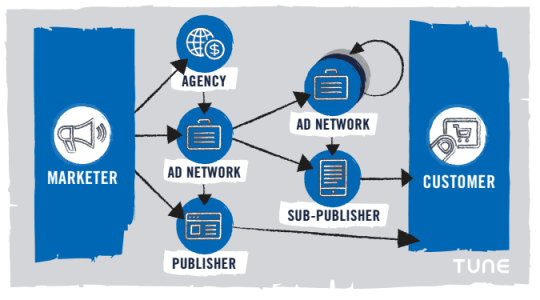
Photo by Hitesh Choudhary on Unsplash
Mobile marketers know it’s not enough to measure just installs, as 24% of apps are opened only once. It’s important to keep users engaging with your app so your hard-fought acquisition efforts don’t go to waste, and so you can increase the lifetime value of each and every user.
But even if you measure the obvious in-app events such as opens, registrations, and purchases, there are at least a dozen other in-app events that can give you valuable insight into your customers and their purchase behaviors, demographics, interface challenges, and more.
In this post, we’ll list 19 in-app events you should be measuring, why they matter, and how to use them to get the best results for your customers and your business.
1. Achievement Unlocked
What it measures: When users gain access to additional functionality, generally by completing a particular event or level.
Why you should measure it: To see how engaged users are, where they drop-off in interest, and tailor app updates accordingly.
2. Add to Cart
What it measures: When users include items in their virtual shopping cart to be purchased.
Why you should measure it: To understand which items users favor most, as well as patterns in purchase behavior like time of day, location, and demographic.
3. Add to Wishlist
What it measures: When users include items in their virtual list of wanted items, not necessarily to be purchased immediately.
Why you should measure it: To see which items are most popular and understand demographic trends like age, gender, and location of users who favor certain items. You can also entice users back to complete the purchase with a promotion or discount later.
4. Added Payment Info
What it measures: Users who add their payment info for making purchases.
Why you should measure it: To identify where users fail to complete a purchase. If they get to this step but fail to follow through, there could be challenges with the UI that’s causing users to abandon. You can also offer a reminder to see if users need just a little nudge to complete the purchase.
5. Checkout Initiated
What it measures: Users starting the checkout process once items have been added to their carts, and are ready to complete the purchase.
Why you should measure it: To see which items a user likes enough to initiate a purchase for. If they fail to complete the purchase, this is another metric for which you could send a reminder or discount to convince them to purchase.
6. Content View
What it measures: When users look at content on a page.
Why you should measure it: To gauge what users are interested in, and generate additional similar content to increase views and keep users coming back for more.
7. Invite
What it measures: When users request that someone do something; for example, inviting a friend to download the app.
Why you should measure it: To see which offers are compelling enough for people to pass along. If you create more of those, you can generate more app installs.
8. Level Achieved
What it measures: When users complete the necessary requirements to move on to the next stage; generally applies to gaming apps.
Why you should measure it: To see how engaged users are, and up until which point. If users are dropping off at a certain level, your game or app may be too hard — so you can adapt your app to increase the likelihood of users continuing to play, or offer reminders to bring them back into the app.
9. Login
What it measures: When users gain access to their account by identifying and authenticating themselves.
Why you should measure it: This is another measure of engagement, where it’s useful to see how often (and when) users return to an app to login. You can also measure whether there are any hiccups with the login process, and improve the UI accordingly.
10. Opens
What it measures: When users open your app (after install).
Why you should measure it: Ultimately, you want users to keep coming back to your app day in and day out. One way to determine whether or not you are engaging existing users is to measure them opening your app. The more users open your app, the more likely they are to retain the app, make purchases, and continue to engage with it.
11. Purchase
What it measures: When users complete a purchase transaction and buy an item.
Why you should measure it: Knowing what users have bought in the past can help you guide them towards future purchases.
12. Rated
What it measures: When users assign a value to something according to a particular scale; e.g. 4 stars.
Why you should measure it: To see how users feel about different products or aspects of your app. You can pinpoint low ratings to make improvements, or know what’s working well with high ratings.
13. Registration
What it measures: When users enter info about themselves to create an account.
Why you should measure it: This works especially well for apps that require a user to first register, i.e. create a user profile, before enabling the full functionality of the app. Measuring the completion of the registration allows you to distinguish users who have a genuine interest in using your app, and therefore a greater likelihood of generating in-app revenue later on, from those who don’t want to invest the time (as well as their hard-earned money) into the app. Registrations rates can also provide you with insight into the flow or “ease of use” of your app. High open rates but low registration rates can be indicative of a poorly designed user experience or a complicated interface.
14. Reservation
What it measures: When users arrange to have something (such as a table or seat) held for them at a later time.
Why you should measure it: This can be used not only as a practical tool to organize reservations and confirm that you don’t oversell availability, but also as a tool to see which spaces are most popular. By analyzing what they have in common, you can increase your premium offerings and better tailor to user preferences.
15. Search
What it measures: Users who are actively looking for something via a keyword.
Why you should measure it: To see what information users are searching for most often, and what phrases they’re using to search for it. If you don’t have content that fulfills their searches, this is a good directive to get started making it.
16. Share
What it measures: Users giving others access to something (such as sending a link online content).
Why you should measure it: To see which content you produce that users deem interesting enough to share with others. It can guide future content creation efforts, so you spend time on the most worthwhile types of content.
17. Spent Credits
What it measures: When users apply accumulated rewards/points as payment for an item.
Why you should measure it: To gauge what users are interested in enough to apply points toward purchasing. It can help you invest in additional items of a similar nature to increase user engagement and even monetary purchases.
18. Tutorial Complete
What it measures: When users finish a lesson or instructions on how to do/achieve something.
Why you should measure it: This is a useful measure of engagement that lets you know how far users are getting into your app. If there is a certain place users drop-off in engagement, you can tailor your content accordingly to keep them progressing through your app.
19. And To Sum Up: Everything
Get started measuring today
Tell us in the comments below — which in-app measurements have proven most impactful for your business?
Author
Becky is the Senior Content Marketing Manager at TUNE. Before TUNE, she handled content strategy and marketing communications at several tech startups in the Bay Area. Becky received her bachelor's degree in English from Wake Forest University. After a decade in San Francisco and Seattle, she has returned home to Charleston, SC, where you can find her strolling through Hampton Park with her pup and enjoying the simple things between adventures with friends and family.




Very Good Thank you.